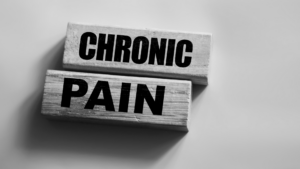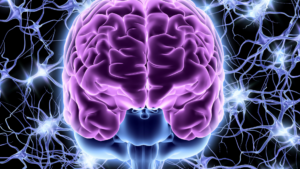Nerve blocks are a common form of therapy used to treat and manage chronic pain. Groups of nerves that cause pain to a particular region or area of the body can typically be blocked via injections of medication also known as nerve blocks. These nerve blocks are numbing substances that numb the nerves signaling a patient’s pain.

Nerve Block Injections for Chronic Pain Management
Four Categories Of Nerve Blocks for Chronic Pain
Nerve blocks are typically categorized into four main categories. These four nerve block categories include: therapeutic, diagnostic, prognostic, and pre-emptive.
- Therapeutic nerve blocks are used to treat chronic pain and various pain conditions. These nerve blocks typically contain local anesthetic which can be used to treat acute pain. Studies have shown these nerve blocks effectively improve the quality of life for patients with chronic pain.
- Diagnostic nerve blocks are issued to identify the source of a patient’s pain. These blocks contain a lower level anesthetic that provides a duration of pain relief.
- Prognostic nerve blocks identify the prognosis of certain treatments. For example, a prognostic nerve block may be issued to determine if a permanent solution, such as surgery, would be a more successful route to alleviate the patient’s pain.
- Preemptive nerve blocks are unique in that they are used to prevent subsequent pain often seen as the results of a procedure. This includes symptoms such as phantom limb pain.
Nerve blocks are also broken down into more specific categories based on the type of pain or location of pain that the patient is experiencing. These specific nerve blocks are sympathetic, stellate ganglion, and facet joint blocks.
- Sympathetic nerve blocks are performed to determine if there is existing damage to the sympathetic nerve chain. This includes a network of nerves that run the entire length of the spine and are responsible for controlling the body’s involuntary functions.
- Stellate ganglion blocks are a type of sympathetic block that are also used to identify damage to the sympathetic nerves. However, stellate ganglion blocks are used more specifically to identify nerve damage to the head, neck, chest, and arms.
- Facet joint blocks are conducted in the facet joints of the spine and are also known as zygapophysial blocks. These are used to determine whether a facet joint is the cause of pain.
Nerve Blocks by Location
Nerve blocks can be injected in various areas depending on the cause and location of a patient’s pain. Some of the most common nerve blocks by anatomical location include…
- Trigeminal nerve blocks for Trigeminal Neuralgia (face)
- Subarachnoid and Celiac nerve blocks (abdomen and pelvis)
- Supraorbital nerve blocks (forehead)
- Cervical, Thoracic, and Lumbar epidurals (neck and back)
- Maxillary nerve block (jaw)
Side Effects of Nerve Blocks
While studies have shown that nerve blocks can be highly effective in treating chronic pain, side effects are always possible. Everyone’s body reacts differently to medical treatments, but common side effects may include soreness at the injection site, rash, itching, bleeding, elevated blood sugars, and extra energy. While this may not happen to everyone, it is important to contact your doctor if you begin experiencing side effects outside of what is considered normal or if you’re experiencing anything causing concern.
Nerve blocks are specifically for patients with nerve damage or neurological conditions such as Trigeminal Neuralgia or chronic back pain. Patients who do not have nerve damage may not see the results from nerve blocks. However, patients experiencing chronic pain from nerve damage can benefit greatly from nerve blocks. Be sure to talk with your doctor if you think that nerve blocks may be the best option to treat your chronic pain.
The team of Progressive Pain Management specialists help treat various conditions that can benefit from these types of nerve blocks. Fill out the form below to get started.
Chronic pain is primarily one of the prevalent conditions affecting approximately 1 in 5 adults in the U.S. A substantial number of these patients experience chronic neuropathic pain. Also, another research shows that neuropathic pain affects more women than men, with a pain frequency rate of 8% and 5.7%, respectively, in persons above 50 years. Even with this high rate of occurrence, many do not understand what it is and the treatment procedures. It has been referred to as a “hidden epidemic” due to its unpredictable nature.
Fortunately, intense neuropathic pain does not always indicate a life-threatening condition. Some people with neuropathy might have relatively minor and manageable symptoms with conservative treatment like medication or physical therapy. Here is all you need to know about different types of neuropathic pain and their treatment.

Neuropathic Pain and Treatment Options
What is Neuropathic Pain?
Neuropathic pain is caused by peripheral or spinal nerve damage that transfers information between the brain and spinal cord from the skin, muscles, and other body parts. The pain is usually described as shooting, burning, tingling, numbness, and pins and needles.
Despite having complex symptoms, lesions or diseases of the somatosensory system are major causes of neuropathic pain. It is often resistant and can be very intense. Other causes include:
- Alcoholism
- Cancer and cancer treatments
- Viral infections
- Diabetes
- Trauma or surgeries which damage the nerves
- Vascular malformations
- Shingles
Types of Neuropathic Pain
The different types of neuropathic pain vary with body parts and nerves affected. When one nerve is affected, it is called mononeuropathy, while damage on more than one nerve is called polyneuropathy. The different types of neuropathic pain and the body parts they affect include;
Peripheral Neuropathy
Peripheral neuropathy is a nervous disorder affecting your hands, feet, toes, arms, and legs. Often, people with peripheral neuropathy experience weakness in their muscles and reduced sensitivity in their skin.
PN differs from other nerve damage forms because it simultaneously affects multiple peripheral nerves. Even if one body part can send signals to the brain, another factor may be unfunctional.
Autonomic Neuropathy
Autonomic neuropathy is a condition that damages the autonomic nervous system. Often the damage is episodic and intermittent. This causes an inconsistent negative effect on the spinal cord signals. Problems with this system will lead to dry eyes, uncontrolled reflexes, and bladder function difficulty.
Focal Neuropathy
Focal neuropathy is a neurological disorder affecting one or more body parts. It is mainly caused by trauma or infection and affects muscles in an area close to the damaged nerve.
When you suffer from focal neuropathy, it is common for you to experience numbness, tingling, burning sensations, and even pain near the affected site. If you experience these symptoms and are unsure what they mean, visit an ophthalmologist or neurologist to find out more.
Proximal Neuropathy
Proximal neuropathy is a condition in which people cannot feel their extremities. This nerve damage causes people to experience numbness, tingling, or feelings of pins and needles beginning in the fingers or hand. In addition to difficulties with walking, performing daily living and self-care activities may be hindered by this disorder.
Diabetic Neuropathy
Diabetic neuropathy is a diabetic condition resulting in nerve damage. This nerve damage can happen in any part of your body, but the most affected parts are the feet. The symptoms can start as mild and unnoticed but will progress in severity over time. People with DN usually have issues with mobility.
How is Neuropathic Pain Treated?
Most types of neuropathic pain will ease with time. However, physicians can suggest transcutaneous electrical nerve stimulation (TENS) therapy for chronic neuropathic conditions.
Other treatment options include pain relief medication, and, in some cases, surgery is necessary. Additionally, here is an outline of the most common treatments;
- Anti-epileptics
- Anti-depressants
- Acupuncture
Working with a neuropathic pain specialist offers a permanent treatment plan that does not involve surgery or medication.
Take Action Now and Start Living Again
Don’t let chronic neuropathic pain define or affect your quality of life. Maybe until now, your options have been surgery or the use of medications. Luckily, Progressive Pain Management offers treatments for neurological and chronic pain conditions. A physician evaluates your condition, conducts lab tests, and creates a treatment plan per your unique condition. Contact us to learn more about neuropathic pain and treatment offerings. We will help provide an effective treatment option for you. Fill out the form below to get started.
Chronic pain is classified as a pain or discomfort that is ongoing and lasts three months or longer. It is typically caused by an underlying chronic condition, although not always. Unlike pain from pulling a muscle or stubbing your toe that goes away after the injury is healed, chronic pain can last years if not managed by a physician.
This type of pain is not always constant, but it does disrupt daily life by preventing patients from doing what they love.

Things to Know About Chronic Pain
What Causes Chronic Pain
For many people, chronic pain begins after an injury or trauma. Other times, it can begin without an obvious cause. Some of the most common causes of chronic pain are:
-
- Previous surgeries or injuries – Old injuries can cause nerve damage because they either were not treated properly the first time or they healed incorrectly.
- Back problems – There are a variety of back conditions that contribute to chronic pain, such as SI Joint Pain, herniated discs, deterioration of the spinal column, spinal cord compression, and many others.
- Migraines or other types of headaches – While chronic headaches are difficult to diagnose, common causes are inflammation, blood pressure issues, stress, or hormone changes in women.
- Arthritis – Arthritis is one of the most common causes of chronic pain and can cause limb deformities, loss of range of motion, stiffness, and inflammation.
- Nerve damage – An injury, accident, or infection can cause chronic nerve pain (neuropathic pain). When nerves are damaged, they are unable to function properly and that oftentimes leads in a loss of communication between body parts and the brain.
- Fibromyalgia – Fibromyalgia is a musculoskeletal condition that causes widespread muscle pain throughout the body. Studies show that this condition worsens pain by affecting the way your brain processes these signals.
How Does Chronic Pain Affect My Body?
When pain is experienced for a long amount of time, your nociceptors go into overdrive and become more sensitive to pain. They produce lower level signals, making you feel more pain than you are actually experiencing. This is problematic because your body is likely not harmed, but your pain receptors exaggerate the pain.
When an injury or trauma occurs, the area’s pain sensors (nociceptors) are “turned on.” They send an electrical current that travels along the nervous system until it reaches the brain. Your brain understands that signal and sends the message that you are hurt. In chronic pain patients, the nerves continue sending the pain signals to the brain, even after the injury is healed.
Why Are Narcotics Bad for Chronic Pain?
Narcotics, in chronic pain patients, create a cyclical relationship and dependency. At first, these drugs may relieve pain by attaching themselves to your brain’s endorphin receptors. However, after any length of time, the receptors become dependent on the medication’s effect. The brain limits the amount of endorphins it produces, reducing the body’s natural painkillers. Without natural endorphins, narcotics have to be taken to maintain a level of comfort.
This causes problems when the patient is no longer prescribed these medications from a physician, because their body has become dependent on the narcotics’ effect on the brain. Your brain and body need that chemical to function regularly. Stopping or lowering the dose can cause your body to react poorly, including nausea, shakes, headaches, and other serious problems.
Available Treatment Options
Treatment for chronic pain will depend on your pain’s severity and your physician’s diagnosis. The root cause of the pain will also determine the treatment plan your physician designs.
Medications for Chronic Pain
Medication can be helpful to patients who suffer from chronic pain. Over-the-counter pain relievers such as acetaminophen (Tylenol) or NSAIDs like aspirin and ibuprofen are useful in reducing inflammation and stiffness that worsens chronic pain.
Physicians do not recommend opioids due to the aforementioned risk of dependency and danger of abuse.
Analgesics such as antidepressants and anticonvulsants are useful in chronic pain that is caused by nerve-related disorders. This includes pinched nerves, sciatica, and herniated discs.
Procedures for Chronic Pain
If the chronic pain worsens and other pain relief methods have not been successful, your physician may recommend a medical procedure.
Some examples include:
- Electrical stimulation
- Nerve block injections
- Acupuncture
- Facet joint injection
- DRG therapy
- Spinal cord stimulation
There is no cure for chronic pain, but when managed effectively, patients can live their lives relatively pain-free and comfortably.
Under a pain management specialists’ supervision, it is recommended that patients who are looking to reduce chronic pain make lifestyle changes in order to promote health and wellbeing. This includes being active, incorporating low-impact cardio into their daily routine, eating a healthy diet, and getting enough sleep.
Learn more about pain management and how the team at Progressive Pain Management work with their patients to create a personalized pain management plan that works best with their lifestyle and needs.
Fill out the form below to get started today.
Muscle pain affects anyone, including powerlifters, construction workers, and pregnant women. Failure to address the issue leads to chronic pain, affecting how one moves. This condition occurs when muscle fibers get stuck in contraction, forming bumps known as trigger points.
Massages and chiropractic adjustments can help relieve the pain. However, trigger point injections may be necessary to eliminate chronic muscle pain.

Trigger Point Injections for Treating Chronic pain
What Are Trigger Point Injections?
Trigger point injections involve injecting a local anesthetic into contracted muscles to relax them and relieve pain. The affected muscles often form bumps under the skin that cause tenderness due to restricted blood flow.
Trigger point injections effectively relieve the symptoms of myofascial pain syndrome, a condition that affects the muscles and the tissue surrounding them. Trigger points can form due to the following reasons:
- Musculoskeletal disorders
- Lack of regular exercise
- Vitamin deficiency
- Prolonged poor posture
Trigger point injections can include a combination of local anesthetic and steroids that block pain receptors and reduce muscle inflammation and knotting.
The Benefits & Conditions They Treat
Trigger point injections can help relieve chronic pain affecting the muscle and nervous system. Some of the conditions treatable with the injections include:
Migraines
Trigger points in the neck and shoulder muscles may cause tension headaches which can be mild or severe and throbbing. Trigger point injections can help deliver immediate relief to patients suffering from severe headaches or frequent migraine attacks.
Myofascial Pain Syndrome
Myofascial pain syndrome is a chronic condition that affects muscles, causing them to knot and send painful sensations to unrelated regions. Several causes, such as injury, poor posture, and psychological stress, cause muscle stiffness and limit motion.
Trigger point injections can help block neural pathways and relieve pressure from the contracted muscles. The injections can also help torn muscles heal.
Fibromyalgia
Fibromyalgia is a chronic pain condition whose symptoms include widespread body pain and fatigue. Patients also experience mental distress and trouble sleeping.
Injecting an anesthetic into a trigger point can help deliver relief from the pain and relax any knotted muscles.
What Happens During The Procedure?
Trigger point injections typically take minutes and require a brief in-office appointment. Injecting trigger points may be painful, but this is a great sign your doctor is treating the correct spot.
During the procedure, your doctors will first identify your trigger point. After sterilizing the area of concern, they will inject the trigger point with local anesthesia to relax the muscle and bring relief. The dry-needle technique is used for patients allergic to anesthesia.
Trigger Point Injections with Our Team of Experts
Trigger Point Injection is effective in providing relief to patients experiencing chronic pain. The injections help the inflamed muscles relax, allowing the blood vessels to function freely.
Our team of experts at Progressive Pain Management focuses on interventional pain procedures that bring relief to patients with chronic pain. Our physicians have the expertise to administer some of the most advanced pain management techniques. Please fill out our form and let us help you manage your chronic pain.
Individuals would be shocked at the number of unnecessary surgeries annually performed in the United States. Unnecessary surgery, by definition, is exactly what it sounds like; “Any surgical intervention that is either not needed, not indicated, or not in the patient’s best interest when weighed against other available options, including conservative measures.” Fortunately, there are easy, effective actions that you can take to avoid going under the knife.

Working with Doctors to Avoid Unnecessary Surgery
Four Ways to Avoid Undergoing Unnecessary Surgery
1. Be educated.
Don’t be afraid to ask your doctor questions to better understand how the recommended procedure will help you in the long run. Will this surgery get rid of your pain? Will this surgery help improve the way your body operates? If the answer to either of these questions is yes, ask them to explain exactly how it will help. The same thing goes for understanding the risks. Be aware of common complications as well as worst-case-scenario situations. Being fully informed will allow you to make the best decision for you. You are your biggest advocate.
2. Know your doctor.
Research your physician and/or surgeon to be sure you are comfortable with the person who is taking care of you. Look into their board certifications, their success rate for the surgery they are presenting to you, and the number of times they have performed the procedure. There is nothing wrong with being certain you are in the best hands and receiving the best care.
3. Consider any alternative treatments.
Not all cases of illness or chronic pain require surgery. Be sure to discuss any and all alternative courses of treatment with your physician. Symptom management or watchful waiting may be the route to go; monitoring your symptoms while holding off on surgery to see if your condition improves, worsens, or remains the same.
4. Prioritize a healthy lifestyle.
You’ve heard this one time and time again and it still rings true. Get moving, even if you’re just taking a daily ten-minute walk. Drink plenty of water. Focus on eating a whole-foods or low-fat diet. Be sure you are getting adequate sleep every night. Modifying your lifestyle to incorporate healthier behaviors ultimately leads to a healthier you.
Understandably, sometimes surgery is the best course of action for patients. However, you should never feel pressured to move forward with any medical treatment you are uncomfortable with. Be educated, know your doctor, consider alternative therapies, and prioritize a healthy lifestyle. These four steps alone may help you, or a loved one, avoid an unnecessary surgery.
The experts at Progressive Pain Management can help manage pain conditions using minimally-invasive techniques and state-of-the-art therapies to help you avoid surgery. Fill out the form below to get started.
There is an ever-growing variety of treatments for those suffering from chronic pain. There is the option of general medicine – oral and topical therapies – that can be used to reduce pain and inflammation. Your doctor may suggest non-medication pain relievers or even use alternative methods like acupuncture.
Physicians will occasionally use interventional techniques involving outpatient procedures or injections of various levels to treat pain. With the recent growth of research, knowledge, and game-changing technology, the amount of treatment options keeps increasing. But not only that, reliable, effective, and safe techniques can be used to manage pain.

Common Treatment Options for Pain
Common Treatment Options to Relieve Chronic Pain
- Exercise
Although rest alleviates pain, too much rest can actually increase pain and increase your risk of further injury. Stay active to help relieve pain from common conditions such as lower back pain, arthritis, and fibromyalgia. Exercise releases endorphins – the body’s natural painkiller – so as you exercise, you are helping your body diminish pain and build strength.
2. TENS
TENS (transcutaneous electrical nerve stimulation) therapy uses a low-voltage electrical current to block pain signals from going to the brain. Electrodes are placed on the skin near the affected area and the electrical stimulation is transmitted into the nerves, blocking “normal” pain signals.
3. Biofeedback
Biofeedback is a machine-assisted technique that measures information about physical characteristics from a patient. It can capture data such as heart rate, brain activity, and body temperature to help enhance the patient’s awareness of how their body reacts to stress and pain. This helps patients learn how to manage physical and emotional pain due to chronic conditions.
4. Yoga
Yoga incorporates a number of relaxation techniques such as breath control, meditation, and strength-training exercises. The combination of these techniques help with chronic pain conditions like arthritis, headaches, back pain, and fibromyalgia. Yoga helps reduce pain that is specific to stress-related conditions. The gentle movements of yoga helps strengthen muscles without putting strain on other parts of the body.
5. OTC Pain Relievers
Over-the-counter pain relievers such as NSAIDs and acetaminophen help relieve mild to moderate pain. The most common medications are Tylenol, Advil, Motrin, and Aleve. NSAIDs reduce inflammation and swelling. Your doctor will be able to suggest which type of OTC medication is best for your chronic pain. Taking pain relievers for long-term relief can cause negative side effects, so be sure to consult with a physician before taking anything.
6. Nerve Block Injections
Nerve block injections are primarily performed as outpatient procedures, but may be used on patients who are already hospitalized for other reasons. Often times, doctors will use contrast dye to determine the most accurate placement of the injection needle. There are a number of different types of injections: epidural steroid injections, facet joint injections, lumbar sympathetic block, celiac plexus block, as well as others.
7. Physical Therapy
Physical therapy helps relieve pain by using specialized movements and techniques. PT helps restore range of motion, improve movement, and normal functions that have been impaired by injury, chronic pain, or a disability. Physical therapists utilize a variety of techniques to provide well-rounded care for their patients including stretching, strength-training, pain-relieving techniques, and sometimes TENS therapy. The goal is to help restore your quality of life and help patients get back to doing what they love.
8. Mind-Body Relaxation Techniques
Mind-body therapies are techniques that are used to train the mind’s ability to positively affect pain and symptoms of the body. Many techniques include relaxation therapies such as meditation, progressive muscle relaxation, breathing exercises, and mindfulness. Training the body to relax and release stress can reduce pain and discomfort from chronic conditions.
9. Therapeutic Massage
Therapeutic massages help manage pain by reducing stress and relieving tension by increasing blood flow. Massages reduce the chemicals in your body that stimulate and sustain pain. Those who suffer from painful muscles, tendons, joints, and chronic back and neck pain can benefit from therapeutic massages. By applying pressure to certain areas on the body, it is possible to impede pain signals to and from the brain, although the effectiveness is still being researched.
Finding treatments that help reduce inflammation and discomfort is important when you live with chronic pain. Regain your quality of life and get back to doing what you love with the help of the experts at Progressive Pain Management. Fill out the form below to start.
There are a lot of options for treating pain without the use of narcotics. The opioid epidemic is spreading across the nation at frightening rates. Many state laws are cracking down on opioid prescriptions to prevent excessive prescribing.
However, many chronic pain patients feel lost and confused about available options. The state of New Jersey passed a law limiting initial opioid prescriptions to 5 days to reduce opioid misuse and addiction. Other states are following suit. Chronic pain is a legitimate medical concern.

Treating Pain Without Opioids
Non-Opioid Treatments for Chronic Pain
Over-The-Counter Pain Relievers
Taking OTC pain relievers may not be the best way to manage your chronic pain, but will help reduce symptoms on a daily basis. Many doctors prescribe Non-Steroidal Anti-Inflammatory Drugs (NSAIDs) for those suffering from chronic headaches, osteoarthritis, or rheumatoid arthritis because these medications help fight pain and inflammation.
Physical Therapy
Patients who suffer from chronic pain are typically unable to maintain a healthy, active lifestyle. This leads to weakened joints and muscles. Physical therapy helps patients reach their full potential using low-intensity therapies like hydrotherapy and ultrasound. Once they get used to that routine and intensity, the focus can shift to more targeted exercises for their specific pain. Physical therapy encourages a higher quality of life and helps patients regain mobility.
Acupuncture
This ancient Chinese form of pain management is most often used to help treat back and neck pain, osteoarthritis, and chronic headaches. The needles stimulate a nerve, signaling the brain to release endorphins that act as a natural opioid. By stimulating the nerve that runs from your brain to your colon, inflammation will lower and often reduce the cause of pain.
High-Tech Methods for Treating Chronic Pain
With technology, new methods for treating pain are becoming increasingly popular with both doctors and patients.
Radiofrequency Ablations
This process uses heat to reduce pain by eliminating communication to the brain. It’s common in patients who suffer from chronic pain in the lower back, neck, and joints. It provides immediate relief and gets the patient back to a restored quality of life in a shorter amount of time.
Spinal Cord Stimulation
Spinal cord stimulation hides the pain signal before it can reach the brain. A small device is surgically implanted under the skin and sends mild electrical currents to the spinal cord. Pain is reduced due to the stimulation modifying the pain signals and redirecting them away from your brain. Patients may sense a tingling sensation instead of pain.
Nerve Block Injections
With the help of an X-Ray, these injections can dampen or block the pain. Nerve blocks help the pain from spreading to other parts of the body, by minimizing the signals sent to the brain. Different types of nerve blocks depend on a patient’s pain. Injections can be used to treat painful conditions, determine the source of pain, or to predict the result of a treatment.
Physicians are using these non-opioid treatments instead of writing prescriptions. Other therapies that don’t include medication like exercise therapy and cognitive-behavioral therapies (CBT) are gaining popularity. They focus on changing the patient’s attitude and awareness of their pain and teaching coping mechanisms to better manage their pain.
Talk to your doctor about alternative treatment options if you suffer from chronic pain. Progressive Pain Management provides a variety of pain management options to help you find relief from your chronic conditions. Fill out the form below to get started.
Chronic pain affects millions of Americans each year. Back pain is not only uncomfortable, but it can be debilitating and cause damage to other parts of the body. Living with back pain interferes with the quality of life on a regular basis and can be incredibly limiting.
Back pain can be acute or chronic, and many factors determine the kind of pain you experience. Because the back is such a complex structure, conditions vary from short-term wear-and-tear relief using over-the-counter medications to degenerative conditions treated by invasive surgeries.

Treating Chronic Back Pain
Treating Chronic Back Pain
In many cases, chronic back pain is treated through the use of minimally invasive procedures and joint injections. Many physicians use fluoroscopic guidance to perform these types of treatments. This allows them to see the affected area on a display screen and precisely place the needle. Fluoroscopy guidance helps prevent surgery, since is allows minimally invasive techniques to be performed with the greatest accuracy.
Your individual symptoms, the source of pain, and need will determine the best treatment method. Many minimally invasive procedures and joint injections work to reduce pain.
Joint Injections and Treatment Options
Epidural Steroid Injections
This injection is used to reduce inflammation in the spinal column that causes pain and nerve irritation. An anti-inflammatory medication is injected into the epidural space in the spine. These injections are a good option for patients with spinal stenosis, herniated discs, and degenerative disc disease. Patients typically find their relief starts within a week of receiving the treatment and it lasts anywhere from a few days to a few months.
Facet Joint Injections
Facet joints are the small joints that allow your back to bend, twist, and move. When they become inflamed or injured, they can cause immense pain. This procedure injects a steroid and anesthetic medication into the joint. It can be very effective for patients who have suffered cartilage damage or back injuries from twisting. Pain relief may last weeks or months.
Trigger Point Injections
Trigger points are small muscle cramps within the body of a muscle that are extremely tender. Trigger points refer pain to other areas of the body. These injections administer a numbing agent to the trigger point, allowing it to relax and reduce pain. Trig point injections may be helpful if you experience back pain when pressure is applied in a specific area.
Sacroiliac Joint Block Injection
The SI joint connects the lower back of the spine to the pelvis. When the joints become inflamed and painful, movement can be affected and tasks such as sitting and walking. This injection consists of both an anti-inflammatory steroid and numbing agent. It is injected directly into the sacroiliac joint to relieve pain as effectively as possible.
Expected Results After Joint Injections
Joint injections are an outpatient procedure, and many times, they can be performed in your pain specialists’ office. Patients normally resume walking after the procedure, but need to have someone drive them home after receiving treatments. This is because doctors will administer a low-dose local anesthetic to numb the affected area before treatments.
Is is common for pain to continue a few days after the treatments, especially as the numbing agent wears off before the medication takes effect.
Pain relief generally starts two to seven days after the injection and can be reduced for several months. Your physician will often refer you to a physical therapist so you can exercise and strengthen your joints during this time of reduced or eliminated pain.
If injections prove to be helpful, the procedure can be repeated approximately 3 times a year. Other treatment options are available when joint injections do not reduce your pain. Keep track of your pain levels and communicate clearly with your doctor to create the best-suited treatment plan for your individual back pain.
The team of professionals at Progressive Pain Management are here to help. Fill out the form below to get started.
Fibromyalgia is a common chronic pain syndrome that affects 4% of people in the United States. This pain is typically characterized by widespread chronic pain, fatigue, and tenderness to the touch.
This syndrome affects ligaments and muscles and is usually present for many years by the time a medical professional diagnoses it. Fibromyalgia has been proven to be genetic, although symptoms appear most frequently after a stressful event – whether emotional, physical, or medical. Chronic pain due to health conditions like systemic lupus or rheumatoid arthritis can trigger fibromyalgia syndrome.
Even a gentle massage can be extremely painful for patients who suffer from fibromyalgia. This is because their muscles are tender to the touch. This often disrupts daily life and prevents people from retaining a high quality of life.

How to Treat Fibromyalgia
Symptoms often include
- Stress – mental and psychological
- Illness
- Depression
- Lack of concentration
- Headaches
- Fatigue
Ways to Treat Fibromyalgia Pain
Over-the-Counter Medications
Your doctor may recommend over-the-counter medications to relieve pain from fibromyalgia. Pain relievers such as aspirin, ibuprofen, and naproxen may be used to help minimize muscle aches, reduce inflammation, and improve sleep.
Always check with your doctors before taking NSAIDs. If taken over a long period of time, they increase the risk of strokes, heart disease, and stomach ulcers.
Antidepressants
Antidepressants help with pain and fatigue. They also help raise the levels of naturally produced chemicals such as serotonin and noreinephrine. The side effects of can include nausea and weight gain.
Yoga
Taking yoga classes promotes muscle strength, incorporates meditation, and teaches different ways to relax. Individuals with fibromyalgia who take yoga classes experience a boost in their mood and less pain and fatigue.
Be sure to let your instructor know about your condition so they can adjust poses for you, if necessary.
Acupuncture
Acupuncture for pain relief is proven to help patients who have fibromyalgia. It involved pricking the skin with tiny needles, which is used to promote natural self-healing, encourages blood flow, and a change in the level of neurotransmitters in your brain.
It can be used to treat a variety of chronic pain conditions. Always be sure your acupuncturist is licensed to decrease any risks or side effects.
Physical Therapy
Physical therapy is used to improve your range of motion and strengthen muscles. Therapists design a specific program to help manage specific pain conditions in order to reduce pain. Along with self-care techniques, physical therapy helps manage fatigue and pain on your own.
Exercise
Exercise is a proven way to battle tiredness and increase energy levels. Exercise increases the brain’s production of endorphins, improving sleep and reducing depression. For people with fibromyalgia, activities like walking, biking, and swimming continue to show benefits in improving health.
When fibromyalgia affects your daily life and keeps you from doing waht you love, visit Progressive Pain Management. Their comprehensive and holistic approach to treating pain will help reduce your symptoms while caring for the root cause of pain. Fill out the form below to learn more.
Chronic pain is pain that is ongoing or lasts longer than 6 months. And while this pain can be debilitating and affect your daily life, it can also cause other serious health issues and affect the central nervous system.
How Pain Signals Work in Your Body
Your brain and spinal cord work together to receive pain signals from nerves and muscles, which send patterns of signals to the rest of the body. These signals help the body control leg, arm, and spine movements. These signal patterns develop and allow us to ride bikes, walk, or even play an instrument or knit.
However, when you are experiencing chronic pain, the sensors and nerves that send out pain signals “misfire” and the brain and spinal cord are unable to function properly in accordance with what the signal is trying to communicate. The spinal cord reacts in a way that increases a normally harmless pain signal, creating severe chronic pain.

How Chronic Pain Affects the Central Nervous System
The Relationship Between Pain and the Central Nervous System
When the spinal cord increases the pain signals, your central nervous system understands them as incredibly intense and painful. Even harmless signals are miscommunicated as horrible pain signals. The central nervous system operates differently than a pain-free nervous system and causes the patient to become more sensitive with less provocation. This is referred to as “central sensitization.”
Not only are patients who suffer from central sensitization extremely sensitive to things that should hurt, but ordinary things like a simple touch or slight pressure can be excruciating. Pain that typical patients may describe as a two on a numeric pain scale (1-10 level of pain) may feel like an 8 or a 9 for patients that have central sensitization. The pain becomes extremely amplified, even doing activities such as doing the dishes or walking to the mailbox.
Central Sensitization
Central sensitization is a condition that is associated with the maintenance of chronic pain. During flare ups, the nervous system goes into shock and is in a constant state of high reactivity. Being highly reactive lowers the threshold for the cause of pain and the ability to maintain pain after the injury is healed.
Central Pain Syndrome
Central pain syndrome is a neurological condition. It is caused by a dysfunction that affects the central nervous system, such as multiple sclerosis, Parkinson’s disease, or spinal cord injuries. It can take months or even years after an injury or trauma to affect the CNS.
Similar to central sensitization, central pain syndrome is heightened by light touch. However, the most common symptom is the sensation of burning. Pain increases when the temperature drops, and a loss of sensation may occur.
How Central Sensitization Affects Pain
As peripheral pain signals are transmitted to the spinal cord, there are receptors that determine whether or not the spinal cord should respond. Weak muscle signals can be amplified and misinterpreted as pain. The spinal cord becomes highly irritated and misreads the signals from parts of the body, making them stronger than usual. Patients have even experienced intense pain from the weight of a blanket or bed sheet.
This is the central amplification of a peripheral pain signal. The peripheral and central nervous systems work together to help the body determine how the body reacts to a sensation.
Overtime, chronic pain and misread signals can physically change the way the central nervous system responds to pain. The experts at Progressive Pain Management can help control your chronic pain and reduce symptoms caused by central sensitization.
Fill out the form below to talk to our doctors about chronic pain and symptoms you may be experiencing.

